
|   |

|   |
 e-mail: leelakaverivenkat@gmail.com Collaborative excellence marks Twelfth Pragjyoti Festival: Part 1 March 19, 2022 The twelfth Pragjyoti International Dance Festival, hosted for the last eleven years in Guwahati by Kalpa (shared society for promotion of literature, culture and social harmony), a collaborative online event this year, thanks to pandemic compulsions, featured some of the finest online workshops, built round aspects crucial to the art world today. Aside from the usual interactive sessions, the three and a half day event featured Danslenz, films and documentaries curated by Dr. Arshiya Sethi (founder of KRI Foundation, a key festival supporter), entirely devoted to the North Eastern part of India (as yet a hardly known part of the country for most Indians), with accent on the ecology of art, emphasising issues connected with climate change along with the very grey area of Arts and the Law. In her introductory statement, Anwesa Mahanta, founder of Pragjyoti International established in 2009, referred to the festival as a 'multi destination' event, with many foreigners participating, its interdisciplinary approach helping broaden horizons of dancers in Assam, many becoming the State's best cultural ambassadors. Arshiya Sethi, calling this region her Karma Bhumi, inspiring her first great research work in 1974 on the Sattriya tradition, touched on the challenges created by the pandemic, which had increased the realisation in art circles about the dire necessity to work together to stay alive. Living amidst the shadow of decaying environment and climate change, it was important to create 'rasikas,' for whom guided viewing was the need of the hour. Sangeetha Dutta of Trinayan Kalabodh mentioned how at Lal Bahadur Sastri Bhavan in Delhi, special open forums on art and heritage were being organised as part of the 'Azadi ka Amrit Mahotsav' celebrations. 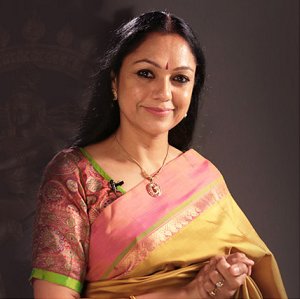 Rama Vaidyanathan The festival deliberations opened on the interdisciplinary approach in Indian arts, with moderator Anita Ratnam's remarks on how body language (dance) influenced and was in turn influenced, by the Aural, the Visual and the Plastic arts. Bharatanatyam artiste Rama Vaidyanathan, speaking on Dance and Literature referred to the Goddess presiding over all arts - Saraswati, who was worshipped as Vak Devi (Vak or speech made up of words). Touching on the Sastras like the Abhinaya Darpana, dilating on the word and its communication through body language and facial responses, Rama drew attention to dance references in the Vedas, the Puranas, in Sangam Literature - not forgetting Kalidasa and his plays. Ancient Sanskrit drama as total theatre blended dialogue with words and dance. The literature of Telugu poets like Kshetragna, or even of the Thumri which became famous during the era of Wajid Ali Shah, were meant for dance. Inspired by mystic poetry, esoteric verses of the Alwars, poetry of the Kannada Dasars, of Surdas, of Raskhan, of Amir Khusru and Ghalib, the Abhangs of the Varkari saints, and much else, for this dancer, the fact that literature lends itself to being deconstructed to create varying interpretations, was fascinating. Indian dance, with its temple and mythological connections - preached and serenaded by monks, and danced by the Maharis, the Devadasis, the Kalavantulu, by forms like Krishnanattam presented at Guruvayoor temple, was invested with a strong spiritual underpinning. Dance while embodying the written word, aimed at traversing it, evoking rasa (the aesthetic state-of-being) communicated to onlookers. Subaltern poetry on the other hand, on current issues was also inspiring dancers. 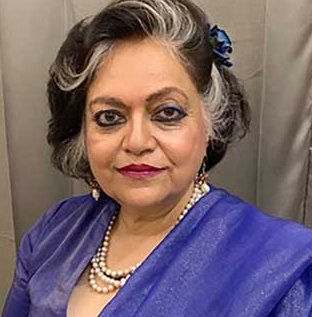 Alka Pande Alka Pande quoting the Vishnu Dharmottara Purana episode of Markandeya and King Vraja, on how the King wanting to learn dance was asked to acquire knowledge of all the other arts first - like music, drawing, sculpture, poetry - before taking to dance, underlined the integrated approach of all Indian art. Supplementing her talk with visuals of early Indian prehistoric cave paintings and rock cut figures at Bhimbhetka, and of the Dancing Girl of Ajanta (2nd century), she pointed out that early dance figures concerned with the physicality of the body, did not have religious connections. The Natya Mandap, an essential part of temples, underlined the dance/sculpture connect.Visuals of the Dancing Shiva (Badami cave 6th-7th century), the Sandstone Ganesh (9th-10th century), the Hoysala Salabhanjikas at Belur (12th century), the ornate floral motif in the Maya panel from Chennakeshava temple, Raslila (17th century ) and Kangra painting of Shiva-Parvati dance, dancing Gopis of the Nathdwara pichwais, and finally on to European and Company School Painting, showing entertaining Indian dancers, helped to underline how the images in drawings, in sculpture and dance showed cross pollination. 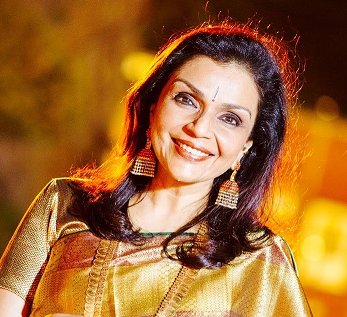 Anita Ratnam Anita Ratnam's leading questions triggering impassioned demonstration with explanations from Sudha Raghuraman was the best approach to understanding a creative musician, who as a singer and music composer for dance, brings to bear on her work a commitment laced with incisive musical knowledge. When she refers to the choice of a suddha rishabha resonance in a raga like Lavangi to reflect a serene yogic quietude or of the daivata of a raga evocative of the kind of tone for portraying a tantric Goddess (music aiding the emotions expressed in words and music providing the moods without words) one smells the outreach of an evolving musician for whom music today is moving boundaries - its exploratory nature spilling beyond the purely Hindustani or Carnatic. In the improvisations, Sudha's kind of rendering of traditional compositions for solo dance comprises, aside from inspiring the dancer with evocative melodic support, an unconscious challenge for the dancer, egging one on to greater heights. In all, the nature of vocal support for the dancer has acquired a character different from the purely supporting one of old. 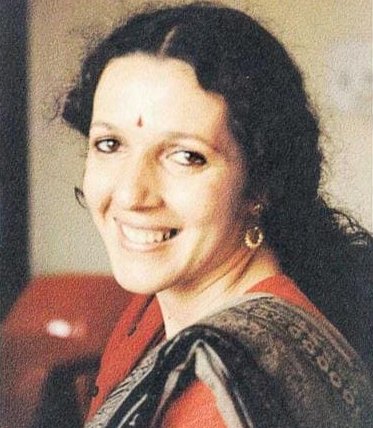 Ileana Citaristi Ileana Citaristi's talk on the sculpture/dance connection, explored a very sculpturesque neo classical tradition like Odissi, which assumed its prescribed classical contours only in the second half of the twentieth century. Pioneer gurus like Pankaj Charan Das, Kelucharan Mohapatra, Debaprasad Das being inspired by the vast array of temple sculpture around cities like Bhubaneswar (particularly the Mukteswar, Parasurameswar temples), Puri, Konark etc while compositing new items, are part of living memory. Apart from the strong images of the Odissi Nataraja (different from Alidha prathyalidha Nataraja in the South Indian temples), the dancing Ganesh, the Chatura Karana, the Sarpa Sirsha Shiva, are the technical aspects common to sculpture and dance - the four main bhangis so much a part of the dance, the Chauka, the tribhanga, the Alidha/prathyalidha and even the Banda Nritya. Apart from the Alasya Kanyas replete in Orissan sculpture, Shiva with veena, the woman in different attitudes - clearly inspiring poses in Odissi Gita Govind danced images, were all mentioned by Ileana. 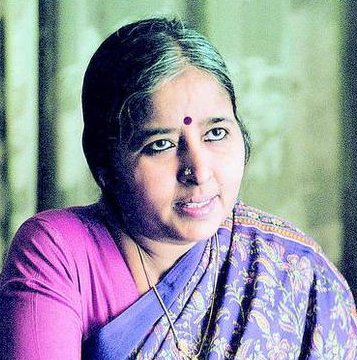 Kamalini Dutt The session on Natavara Krishna in Nritya Darshan was introduced by Kamalini Dutt whose contribution as Director, Central Doordarshan Archives, is well known. Speaking of Krishna as world protector in his myriad roles, she referred to his willingly taking on Maanusha Vesham, living amongst ordinary men and women. Alluding to works like Krishna Karnamritam by Leela Shuka, specific reference was made to the Ujwala Neelamani , a supplement to Bhakti rasamrita sindhu pertaining to all the rasas, which describes Krishna as epitomising conjugal sringar rasa. Krishna in nritta, natya or nritya personifies the joy of dance in abandon. Purandhara Dasa called him the Kapatanataka Sutradhari , the ultimate trickster, who holding all the strings in his hands, from his birth in the prison cell to Devaki, guides his own destiny - informing his father Vasudeva, that placed in a basket, he is to be taken across the Jamuna (in spate at the time), to be placed in Nanda's household under Yashoda. Destroying demon Putana as a suckling infant, dancing on the hood of Kaliya in boyhood, he mesmerises nature and its creatures with the divine melody of his flute music. Flirting and sporting with the Gopis, he multiplies into several Krishnas to partner each of the Gopis in Raas play. Jayadeva's Gita Govinda, where he romances with Radha and the Gopis is a 'watershed' for after this, he becomes the philosopher of the Gitopadesha. 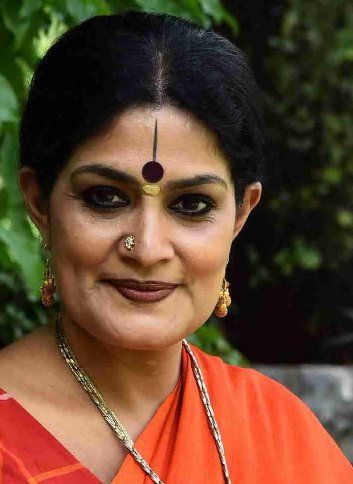 Geeta Chandran Among the dancers, Geeta Chandran, in a sweeping reference to her personal lifelong journey with Krishna, mentioned her right introduction to this 'fabulous entity, who unlike Shiva was not aloof,' under Bharatanatyam teacher Swarna Saraswati, through the Sarasijakshulu Sabdam. Moving through her career trying to understand the many aspects of Krishna through Padams of Kshetragna, poems of Bharatiyar, of Oothukadu Venkatasubbaiyer, through poetry of Surdas and Meera under late Jamuna Krishnan who was doing research on Vidhyapati, and finally through her tryst with Brindavan, familiarising herself with the Ashtachaap Kavis, Srimad Bhagavatam and the beautiful Godhuli poetry with each Season having its own flavour. Further, introduced to looking at Krishna through the Jaina philosophy, Geeta realises that there is no finality in this journey of Gopis, Yashoda and Bhakti. She followed this introduction with a short performance interpreting the first line of "Krishna nee begane baro" showing three different stages of Krishna involvement- first the vatsalya rasa of a mother playing and calling out to child Krishna, next as the romancing Gopi and finally as the devotee Meera becoming interred with the Lord. 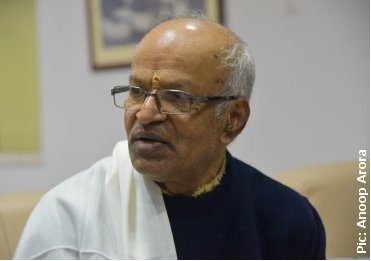 Sadanam Balakrishnan Asan Sadanam Balakrishnan's very informative and interesting intervention on Krishna in the highly stylised Kathakali tradition was to point out that except for the Purappadu with all the performers turned out in typical Krishna attire with the peacock feathered headdress armed with flute, conch shell and chakra, Krishna as a character in Kathakali dance drama, plays a very insignificant role. Sadanam's explanation was that since Kathakali characters were wholesome, portrayals with both positive and negative qualities receiving equal weightage, the 'negative' rasas of karunyam, bhayanakam, raudram being not applicable to one who is portrayed as Vasudeva (Lord of the Earth), restricted Krishna's presence as a principle character - though in several dance drama productions, Krishna makes an appearance for powerful but fleeting moments. While Sadanam's Guru, late Keezhpadam Kumaran Nair had in his creation of the Geetopadesh play, with Krishna's famous announcement to Arjuna "Yadha yadha dharmasya..." about taking rebirth on earth, every time the power of evil began to crush dharma (Paritranaya sadhoonam, vinashaya cha dushkrtaam....) becoming a favourite presentation in performances in India and abroad. Kumaran Nair's Dasavatar composition based on Jayadeva's first ashtapadi Pralaya prayodhijale... also became a great hit. Rasakrida as a presentation went against the Kathakali identity and was never performed. Sadanam himself, who first appeared in the role of Krishna in 1956, enjoyed presenting it. Radha Madhavam, the much sought after play choreographed by him with the Guru's blessings in the Sharadas-amsi part with only talam and chenda, had been much appreciated. The video of four Krishna / Gopi pairs dancing, colourful and evocative, in no way compromised Kathakali majesty. The guru mentioned the Sopanam music for Radha Madhavam as being suitable for exploration in many Kathakali / Mohiniattam jugalbandis. He felt that there was space in Kathakali for young choreographers to work on more of a role for Krishna. 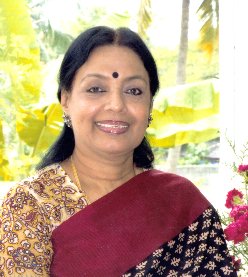 Bharati Shivaji After a statement of "easier to dance than to talk" Mohiniattam exponent Bharati Shivaji, for some reason, stuck to talk. She mentioned regional forms of Kerala, her tryst with Mohiniattam in Kerala under Kavalam Narayana Panikar (thanks to late Kamaladevi Chattopadhyay's initiative), the suitability of Sopanam sangeet for Gita Govindam poetry, and her discovery of the beauty of the Guruvayoor temple and its connections with dance and music, and the realisation that Gita Govindam, which is referred to as 'Devagita' is more celebrated in dance than in the temple worship. She spoke of Mohiniattam as the ideal dance to convey bhakti sringar and how she had been inspired to express in different 'rasas' the words based on one description of Krishna, by one considered the father of Malayalam language, Thunchathu Ramanujam Ezhuthachan who translated both Ramayana and Mahabharata. His Kesadi padam (hair to toe) description of Krishna based on these words (describing how Karna on entering the battlefield at Kurukshetra had smelt Krishna in Arjuna's charioteer) had inspired Bharati to try out several interpretative possibilities. Similarly she had been struck by modern poet Chengampuzha Krishna Pillai's interpretation of Radha wondering, expressing with her sakhi if it is the same Vasantotsavam - for Krishna now as king is so different and she is unable to understand this spiritual Krishna. While explaining how literature inspired Bharati, a short abhinaya bit performed would have provided the right contrast on how the words inspired body language in Mohiniattam. 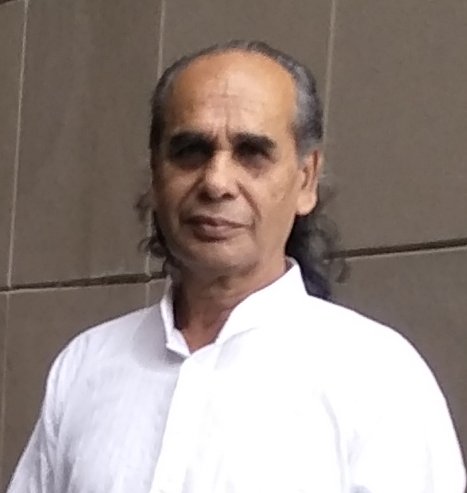 Ghanakanta Bora Sattriya Adhyapak Ghanakanta Bora Borbayan's explanations in Assamese, of how this art form, based on founder Mahant Sankardev's philosophy, was entirely fashioned round the persona of Krishna as the sole presiding deity and not just as one of the trimurti, was translated into English by scholar Pradeep Mahanta. In the Sattras, a range of total theatre termed Sattriya, had dance as one of the ingredients. Brief video clips supplementing his introduction had the Gayan Bayan, the Krishna Vandana in invocation, specific movements from the vocabulary of the Sattriya dance form being practised in the Mati Akhadas, playfulness of Krishna in his Natawara roopa during childhood and later with the Gopis, Krishna Bhangi and then an excerpt from the magnum opus and still highly revered Ankia Bhaona with the Sutradhar announcing the entry of Krishna. The all too brief clipping of Anwesa Mahanta in the Sutradhari Nach showed her exceptional talent. 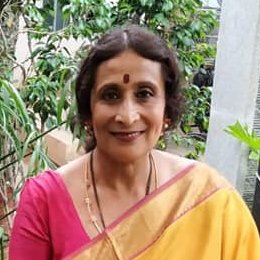 Vyjayanthi Kashi Very erudite in her sweeping references to Krishna in the Kuchipudi tradition, Vyjayanthi Kashi, right from the Kuchipudi Bhagavatam, with the Kalapams, Yakshaganas, Krishna lilas and Krishna Mayas, also stressed on Krishna's sampoorna swaroopa influenced by the Vaishnav Bhakti movement, endearing him to all in multifarious roles - as friend, as lover, as confidante, as Guru, as destroyer of evil and altogether as a charmer. The madhura sringar bhakti for this idealized and personalized God was elaborated in the writings of Annamacharya, Kshetrayya, Ramanuja and scores of others. The Krishna-Satyabhama interaction, Padavalis evoking the ashtavidha avasthas, Yati Narayana's Krishna Leela Tarangini, Jayadeva's Ashtapadis strung to great music, episodes from Krishna's life like Rukmini Swayamvara, Kaliyamardana, Bakasuravadha, of Pootana (In fact, were some of these Moksha or Vadha? asked the speaker) speaking of which with the solkettus and passages of mixed sahityam and rhythmic syllables, Vyjayanthi Kashi became overly dramatic - and one wondered why a very short demonstration could not have found place, instead of this impassioned descriptive drama. Dancers with the gift of the gab (and it is good they have it) get so carried away with their ability with words, that they forget they are primarily representatives of dance. 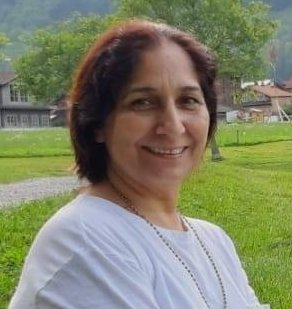 Uma Dogra Uma Dogra in similar fashion speaking passionately on Krishna in Kathak, made inspired references to the Ashtachap poets, to Surdas whose Bhoojata Shyam, Kaun tu Gori was particularly mentioned as an example. The "semi classical thumri comprising thumak me chalak of composers like Bindadin, and examples of various compositions like "Eri sakhi ab mein unko janen na doongi" , "Dagar bich kaise chaloon", were mentioned with passion - but without even a hint of abhinaya from the dancer- and that after mentioning that her father Motiramji was a Thumri composer! Showing a clip of late Pandit Durgalal's padhant of Nadi ke tatpar in misrajati, from the Sadarang archives, was fine. But surely the dancer (representing the Jaipur gharana she is trained in) could have rendered one Natwari tukra (she spoke of), recited and danced a Kavit, followed by a brief Gat Bhav topped by a minute of footwork to show how in Kathak, abhinaya is subtly built into pure dance. Kathak has to emerge in the dance while the speech (and Uma Dogra spoke lucidly) can certainly provide the background. 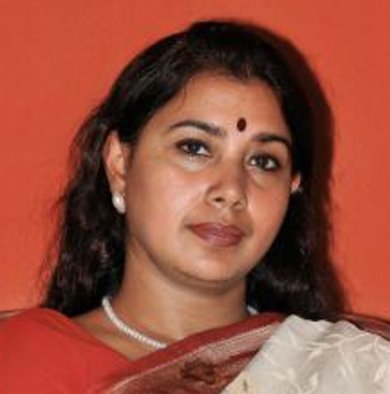 Aruna Mohanty Conceived and composed by Odissi expert Aruna Mohanty, her projection, along with her troupe, provided by far the best interpretation of Natawara Krishna - combining word, dance (solo and group) stirringly melodious music with rhythmic passages - all in a seamlessly poetic presentation. Starting with the image of a hand tracing the outline of Krishna on paper, comes a sloka from the Svetasvatara Upanishad "Apaanipaada javano grahita, pasyati chakshuh sa srinoty karnah.....tam ahur agryam purusham mahantam" expressing the magic of this unseen Krishna who fills the heart, who has no feet but leaves footprints, who has no hands though one feels his embrace, who has no eyes and yet he sees all, who has no ears but responds at once to the call of a Draupadi or a Gajendra in peril. When can I see you and understand you? Music makes a soft entrance, with snatches of scenes based on well known Oriya compositions like "Dekhibo paraasare prana sangini Sri Bansidhar besoku" and delightful fleeting group images of playful Krishna, Krishna of miracles, the philandering Krishna, followed by crestfallen Krishna in separation. One has glimpses of adolescent Krishna, Krishna driven by passion in his love for Radha, with snatches from the Gita Govindam ashtapadis starting from Pashyati dishi dishi, Chandana charchita where Krishna is romancing with the Gopis, to a pining Radha who is advised by the sakhi in Madhave makuru maanini maanamaye, that she forgive Krishna his dalliances and not drive him away when he comes and then the finale of the lovers coming together with Krishna's declaration of love in Priye charusheele ending with the famous "Dehi pada pallava mudaram" statement of Krishna. In the art of stitching together the entire story of the Gita Govindam with just half a dozen significant lines from ashtapadis, Aruna is a past master, knowing exactly how to present as part of the same narrative, her dance ripened by years of experience, alongside the fresh faced, exuberance of young students - neither compromised by the other. It is the switching from one moment to the next, without impediments in the flow, aided by the dulcet music, in the extremely unobtrusive links with lyrical ukkuta recitations, in the rhythmic interventions designed by mardal expert Dhaneswar Swain at cardinal points, and not least in the excellently trained students - all in flawless group rendition, not leaving out the excellent photography with super-imposed images, that one gets an eye filling glimpse of Krishna in Odissi! 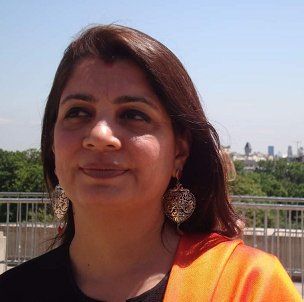 Priti Patel Manipuri dancer Priti Patel, through a few words, traced the history of early animistic worship and Tantra village Gods mentioned in the Cheitharol Kumbaba and other old texts like Pangthoibi Khongkul chronicling the history of the Meiteis. Vaishnavism was first accepted by King Charairongba in 1704 with the first Vaishnav temple constructed during the time of King Kiyamba later. It was in the time of King Bhagyachandra (1763-1798) that Vishnu (Krishna) worship percolated to the common man. Performances of Sankeertan with cymbals, drums and dance became the mode evoking a Godhead, deeply felt. For the deeply spiritual Meiteis, Sankeertan has been a much cherished part of life as lived - presented on every important family occasion. The Raslila celebrations in the temples since the time of Bhagyachandra, has families participating - with those plagued by childlessness, taking oaths that if blessed with progeny, they would offer the child for participation in the role of Krishna for the temple Raslila celebrations. Raslila as sophisticated stage performance, was later recreated by the great Gurus using the classical dance vocabulary and even today the Raas performances - Vasant Raas, Kunj Raas, Nitya Raas and Maha Raas, with the formal setting up of a mandapa which is surrounded by a great deal of protocol attached to the creation of the entire space as well as the performance, including the way people are seated on all four sides, is very much a part of Manipur. And one has to experience Maha Raas performed in the formal mandapa, to understand how spiritually / emotionally connected with Krishna worship, Manipuri culture is. Small video clips substantiated parts of Priti's talk. 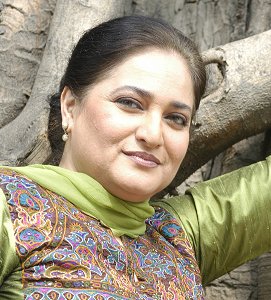 Arshiya Sethi Danslenz - Direction North East - From the land deeply loved was a much looked forward to session. Touching on the pandemic situation today, Arshiya Sethi spoke of how she had found her creativity in the midst of the lockdown and how on this journey on the twisted road of life, she had stumbled upon repositories of unbridled creativity. While her organisation Kri had been founded on the Sanskrit word to do, she had discovered the need for using skills for the good of humanity - to create a world without rifts - with arts building bridges bringing people together. Curating these films with focus on the North Eastern region of India, had been for her a rich experience. Shilpika Bordoloi's film shows how life and culture in Assam are tied to, and in a sense go with the flow of the river Brahmaputra, the filming accompanied by constant ripples and sounds of water. Scenes of vegetation all round, the sounds of wood cutting and of life lived on the boat- the work all round providing glimpses of the intangible heritage of the skill of fashioning boats. One gets a feeling of the river speaking to you. 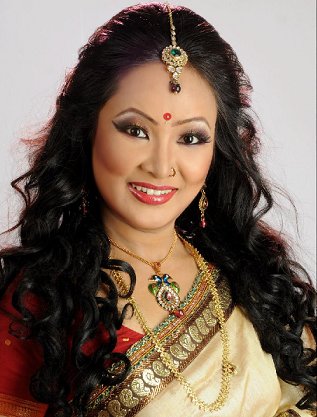 Anjana Moyee Saikia Anjana Moyee Saikia's film by Darpan Dance Academy is on Vaishnav bhakti and the prominent part played by great religious leader Shankardev and the Sattra culture. The slow music with the doors of the Sattra opening, telling glimpses of the Kamalabari Sattra, its verandah and pillars, inmates offering Guru pranam, the musical sounds of khol rhythm and artistes being made up for an Ankia Nat performance. Sattra spirituality is followed by its spin off in the performance culture, showing graceful Sattriya by groups of female dancers - all very evocative of Assamese identity. Culture in the north eastern regions, has undergone both destruction and flux. Aseng Borang Venus Tokchom provides a peep into the Merwakching music band established as late as 2019- an example of a new generation from the hills with fresh hope ushered by the flowing white clouds. The film by Surjit Nongmeikapam, an eclectically trained dancer from this region, on the other hand, captures the other side of a world now lying silent -with the once bustling Ima Keithel Women's Market without echoes of now absent voices, with no clothes hanging or vegetables being sold, with desolate stables with two or three horses tied, waiting for someone to call them - the final touch of a lone sweeper cleaning with a car parked nearby. The contemporary picture, using old picture paintings paints an equally sombre scene, of ambulance sirens, of epidemic, of death, of sounds of weeping and wailing, of creatures dressed in full white Covid outfit. 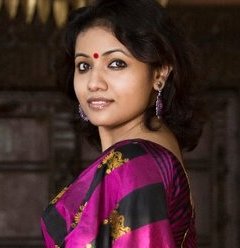 Anwesa Mahanta Amidst the historicity of dance pitted against the contemporary mindset of dancers, what happens to the cultural identity of a region? Anwesa Mahanta takes up the sakhatwa tradition in the navavidha bhakti of Vaishnavism, delving into the innermost recesses of the mind - which still houses the emotional bond with Keshava (who is present and yet absent). That close companionship with the sakhi, helping in the realisation of Godhead in now the internalised sakhi residing within each devotee. As Anwesa Mahanta remarks in her film, in the absence of the Lord, one feels his presence - in every aspect of Nature, even in the silence of the wind, he is present- for lack of motion and the stillness of the mind, is also motion. The flowing Brahmaputra in its currents reflects the deepest secrets of Keshava. Keshava's flute is the music existing within us that liberates us from physical bondage, Bandiadhara Nayanasura. "In Keshava's absence, as a virahini, how do I live?" Love like the Nirantara vriksha (the eternal tree) this story has lived through several bodies. Anwesa's dance rendering "Sakhi hey" throbs with the deep conviction comprising that alchemy running through several generations as the living psyche of a culture binding the old with the new. Madusmita Das' film sees Vaishnavism in its essence as respect for all living creatures from dogs to donkeys. With images of the charkha, it uses Narsing Mehta's poem Vaishnava Janato, the favourite of Mahatma Gandhi, stressing the idea of arts bringing people together and the world living in complete amity. Prachi Saathi's 'Raftar Karo Kam' is a cry to slow down the pace of life regaining those moments of all important silence. Frenetic activity denies one those precious moments like stopping to smell a rose, or being able to look around, relax and experience the small joys of life. Watch nature! See ourselves with new clarity. Watch the birds guarding their young ones with infinite care for 2-3 months - going without nourishment themselves. The idea is to see ourselves in the process with new clarity. The idea is not just to take but also to give back to nature, "Raftar Karo Kam - Ki bachenge to milenge , Jo kudrat ko diye zalam , Voh ham kaise silenge." 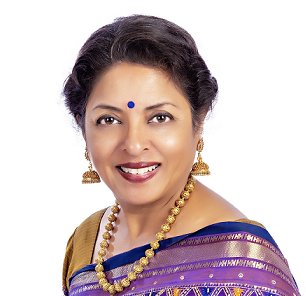 Ramya Harishankar The films under 'Hot theme for a warm climate' were most thought provoking, underlining the fact that dance and arts cannot function in a cocoon, shutting out what is happening to a world with climate change, thanks to an ecology destroyed by man's insensitivity. I was floored by Ramya Harishankar's Bhumika by Arpana Dance Company. Stationed in California, this dancer referred to the long gestation period, before creating a commissioned work like this, in the dance form she specialises in, viz Bharatanatyam. Expressing that 'Bhumi who is life within and without', mention is made of 'balance' which has deteriorated to 'imbalance', with the impending result that 'humanity will crash' unless it becomes alive to what is happening. Turned out in white sarees with black borders draped 'kacha' fashion, five dancers in the impeccably synchronised slow movements (a combination of Yoga and Bharatanayam) start with hands stretched forwards to meet in a homage, body stretched on the floor with one leg folded inwards and the other stretched backwards, the slow movements done to the drone of the tanpura, evoking a quality of silence, which speaks. Has greed stamped out compassion? Instead of nurturing Earth our lifeline, has man raised himself to a false pedestal, from where the voice of warning goes unheard? Our Earth Mother with polluted air suffers, unable to breathe, her surface parched with burning leaves. Climate change has to be reversed by man. With mridangam rhythm, flashes of 'tattumettu', quick snatches of 'taka takita' khandam combination, changing group formations with ever so deliberate and majestic hand stretches, accompanied by the background voice in English spoken by Nikki Shah. Earth's lament comes in a quick cameo in solo, comprising transiting expressions of highly communicative abhinaya presented by Ramya herself in the seated position, her mobile face accompanied by exquisitely mood provoking music played on the veena. With score contributed by Aashray Harishankar, Ramya has produced a unique creation - and from one who has been trained in the traditional 'margam' format, this is a special achievement. The visualisation and choreography are such that the presentation lends itself to being prolonged or abridged as needed.  Bindu Rajendren From Australia, Melbourne's Bindu Rajendren's film Prithvi Tatvam is woven round two contrasting attitudes to the planet - the traditional Indian approach based on hymns from Atharva Veda and other texts venerating what Bhumi Devi has provided for man, with a prayer to keep her nurtured in return - contrasted against selfish conscienceless man bleeding Earth for materialistic greed with contorted priorities. The first image has Bindu Rajendren costumed in pristine Mohiniattam white presenting the lyrical swaying movements of the dance, peppered with sollukettus, presented to hymns sung in Sopanam style, composed by Anil Pazhaveedu. The opposite reaction is portrayed by the same dancer turned out in a black saree, her uncaring attitude of ownership of the Earth turning even vegetation with medicinal plants from green to black, mimed powerfully to English poetry (by Bindu Rajendren) recited in the voice of J.Turner. Shot at the height of the Covid lockdown, in multiple breathtaking landscapes with vast sheets of water, groves and sand (all within a five mile radius of the dancer's home), the film ends with an exhortation to embrace Earth's glorious body with green landscapes and blue waters, urging that all her children work together. Shilpika Bordoloi's Nature of Nescience, goes back to her preoccupation with the Brahmaputra which has cradled and sustained culture - Hindu, Islamic and Buddhist. On the sands, the dancer's contorted body movements, signify struggles, with cultural clashes caused by the way we treat our rivers sullied with garbage, their freely flowing waters damned for selfish reasons, causing havoc of floods and other problems. What will happen to Assamese culture, when a dancer singing a hymn to God, is confronted by a temple or Sattra whose closed doors relegates what she does to a relic of a bygone past? 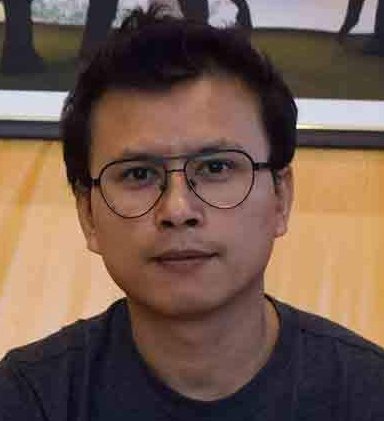 Surjit Nongmeikapam Lairen Maithek by Surjit Nongmeikapam is a very sensitive film on how nature involves endless movement which if abruptly interfered with and stopped, will destroy the balance of both nature and man. Working with two bodies (one of Surjit himself and the other a foreign woman) as workers in bamboo groves, cutting trees, carrying bamboo poles, performing the myriad tasks connected with this activity, while trying to preserve a smooth continuity in the processes involved. The body movements resemble the nature of Manipuri dance with its continuous flowing grace, where one cannot see a movement starting or ending. To work with a non Manipuri body and highlight this unique unfettered continuity which nature requires, which is also connected with Manipuri dance aesthetics, is amazing. With its unspoken reference to the nature/man working at cross purposes today, one got to know after exchanges with scholars working on the North East, that even the choice of a bamboo grove signified a protest - for when Thang Ta was banned as a martial art by restrictive authorities, the bamboo pole became the natural weapon used as a protective device. Poets have waxed eloquent about rivers. And Anjana Moyee Saikia's film, again reverting to the Brahmaputra is based on Bhupen Hazarika's song "Maha Bahu Brahmaputra" full of Assam's culture flowing with the river. Urbanisation and factory pollutants finding their way into the river and interfering with its flow are powerful contributory factors working on climate change. 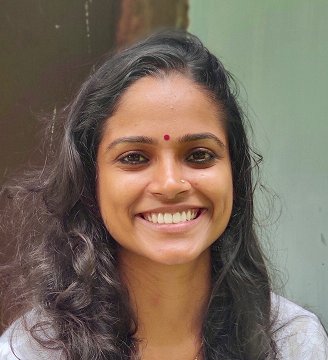 Deepali Salil 'Looking around us and Looking within us' conceived by Deepali Salil, is a rare dance film shot totally in nature, showing man in nature, coexisting with other creatures of this planet -learning by watching the animals, discovering that they have feelings like man. Both man and animal give birth to little ones, sheltered and loved, till adult enough to live on their own. Both live by the flight and fight instinct- fleeing and attacking when threatened. Like man, animals mourn death. But given his superior intellectual abilities, man has not learnt to live intelligently with other species. We share this earth, where resources are not unlimited, with bees, hyenas, tortoise, stag, parrot, ostrich, underwater beings, monkeys and what have you. But man has killed indiscriminately, spouting names like 'killer whales" for a living entity which only kills when attacked. Man on the other hand kills even for sport. The film has a youngster living in nature with animals, leap frogging, hiding, living on the forest produce. The film justifies the act of looking within and discovering and kindling the animal spirits in the human body - a kind of stylised realism showing walking, jumping, revealing all the textures of life and love animals and man share. 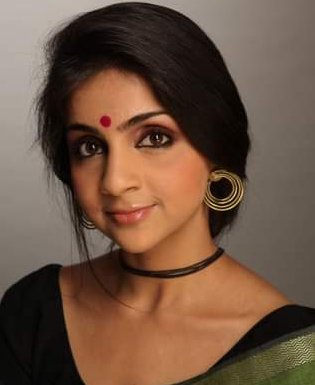 Neha Bhatnagar Echoing the sentiment, that animals can teach us, is Bharatanatyam dancer Neha Bhatnagar, who demonstrates motherly love through a short dance sequence staged in the heart of a forest - using the snake as the example. As Atul Balu remarked once, the unlovely hyena, the great scavenger, is one of the best examples of the power of motherly love. Neha has explored other avenues than the formal proscenium for her Bharatanatyam, which she says is her love but not a profession for her. By marrying her art to her love for nature and animals, she has embarked on using dance as a tool for education. In an exchange with Arshiya Sethi about how dance which she enjoys has given her the open mindedness to look at the art form as more than a tailored performance, she mentioned enjoying using her dance operating jointly with other disciplines. Collaborative excellence marks Twelfth Pragjyoti Festival: Part 2  Writing on the dance scene for the last forty years, Leela Venkataraman's incisive comments on performances of all dance forms, participation in dance discussions both in India and abroad, and as a regular contributor to Hindu Friday Review, journals like Sruti and Nartanam, makes her voice respected for its balanced critiquing. She is the author of several books like Indian Classical dance: Tradition in Transition, Classical Dance in India and Indian Classical dance: The Renaissance and Beyond. Post your comments Pl provide your name and email id along with your comment. All appropriate comments posted with name and email id in the blog will also be featured in the site. |